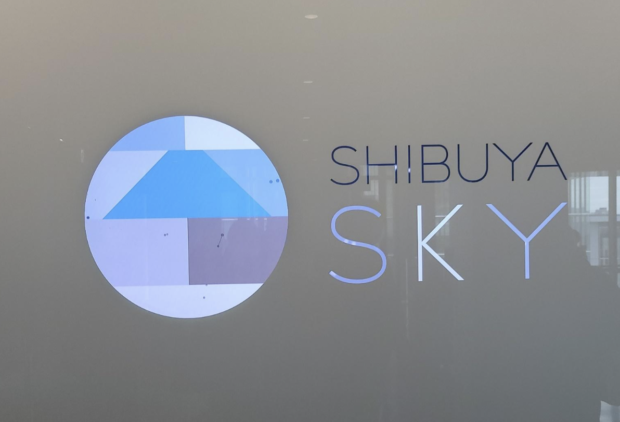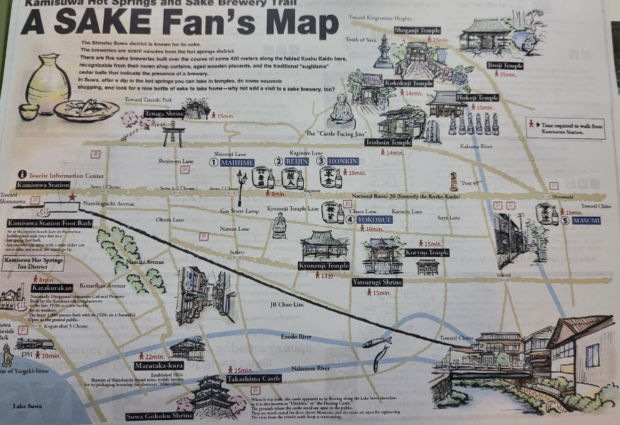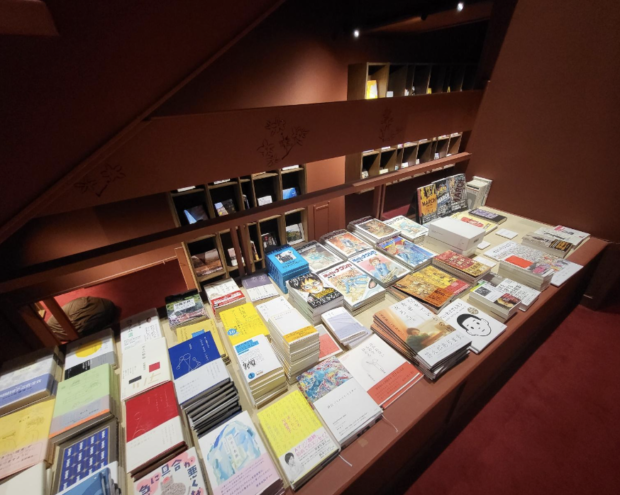The best of Japan in five days
Japan conjures up images of the shinkansen, Mt. Fuji, geishas, distinctive cuisine, manga, onsen, samurai, Sakura, and a mishmash of other unique things and experiences that are hard to find elsewhere in the world, making it undeniably one of the most captivating places to visit. What makes Japanese culture even more fascinating is how it perfectly melds history and modern comfort. So, whether you have visited Japan in the past few years or if you’re ticking Japan off your bucket list just now, there will always be good new reasons to enjoy. A trip around Japan’s unexplored destinations will delight you about how the country’s modernity seamlessly blends with its enchanting old-world charm.
After a two-year travel hiatus, it’s heartwarming to know that Japan is now ready to welcome tourists with open arms. In fact, apart from the popular tourist destinations, Japan offers new off-the-beaten-track destinations that must be included in your itinerary. They recently did a five-day Japan journey from Tokyo, to Yamanashi, and Nagano which included visiting obscure wineries, relishing picturesque views, venerating holy temples and shrines, staying in luxurious hotels, and enjoying local gastronomy before going back to Tokyo. This itinerary unraveled Japan’s best-kept secrets which will make anyone agree that while there is something for everyone in Japan, there is still so much more to explore.
Scenes from Shibuya
A great way to start any Japan visit is to savor Shibuya, also known as Tokyo’s youth mecca, where izakaya bars, art, music, shopping complexes, good food, and the best souvenirs to take home, abound. If Paris has its Eiffel Tower and China has its Great Wall, nobody could talk about Japan without thinking of the iconic Shibuya Crossing. Whether you want to ‘people-watch’ or scramble to cross together with a massive crowd composed of locals and tourists, you will happily relish the noisy fun as the world’s busiest intersection come alive. It is also known that an estimated 1,000 to 2,500 people forge their way across this intersection every two minutes, enough to quickly fill up a football stadium. Shibuya is also home to neon-lit backdrops for movies, TV shows, and the latest J-Pop music videos, just like New York City’s Times Square, making it one of the most calming and soothing things to watch from a distance.

Shibuya Crossing
You could also say hi to Hachiko, one of Japan’s unofficial landmarks that pays homage to a loyal Akita dog who came back and waited for his master, Professor Eizaburo Ueno of Tokyo University, who unfortunately died without saying goodbye. So, the pup sat at the Shibuya Station every day at 3 o’clock in the afternoon, until his own death nearly 10 years later. For dog lovers who know the story, the Hachiko shrine is a must-see and has become one of the most popular meeting places in Tokyo.

Hachiko Shrine
Shopaholics rejoice, as Shibuya is also synonymous to shopping! Being Japan’s fashion paradise, Shibuya is home to an array of iconic shopping malls such as the Mega Don Quijote Shibuya, a short walk from the Hachiko Shrine. This shopping paradise carries the latest J-pop fashion trends, food, anime memorabilia, electronics, makeup, global luxury brands, and literally anything “kawaii”.
After the Shibuya experience, go for a little peace and quiet at the Meiji JinguShrine, a holy Shinto shrine dedicated to the revered spirits of Emperor Meiji who was the emperor of modern Japan and his consort, Empress Shoken. The Shrine—destroyed during the Second World War but was rebuilt shortly thereafter—is surrounded by a lush green forest found right at the heart of Tokyo, and you could make your wish there. Bow slightly before entering the torii gates and remember to pass through the side of the path to the shrine rather than in the middle. The middle of the path and the torii are for the gods, not for humans.

Meiji JinguShrine
Also touted to be a melting pot of Japan’s modern pop culture and rich history, spacious shrine grounds offer walking paths that are great for a relaxing stroll. A quiet walk down the Meiji Jingu Museum and the “power spot” leading to the main sanctuary is a perfect equalizer to the bustling Shibuya experience earlier.
Cap your Shibuya experience by savoring the scenic view of the place via Japan’s best Observation Deck called thE SHIBUYA SKY. An important part of the Tokyo skyline, this landmark is located on the 14th, 45th, and 46th floors and the rooftop of SHIBUYA SCRAMBLE SQUARE. It provides a breathtaking 360-degree panoramic view of Shibuya, from 229 meters above, that will surely stimulate your intellectual curiosity, leaving an unforgettable impression in your heart and imagination.

Shibuya Sky Top

Shibuya Sky Top
When in Japan it is always refreshing to do the Japanese-Tea Experience at Ujien. The tea ceremony is a cherished Japanese ritual which is a series of rituals involving the preparation and tasting of tea and at Ujien—a Japanese-style café—you can see, make, and taste Japanese tea casually. In 1869, Genbei Shigemura, the founder of the Ujien, started a tea business as a middleman in Yamashiro-cho, Kyoto, located in the center of Kyoto’s tea production area. Since then, they have continued to contribute to people’s health, spiritual healing, and enriched lifestyles through tea. The legacy of the tea ceremony in Japan traces its roots in China’s evolution of Zen Buddhism.
According to a Buddhist legend, Bodhidharma, the founder of Chan (Zen), struggled against drowsiness during meditation, he removed his eyelids, and from where he threw them, tea plants started to grow. Soon, Chinese Chan monks would sip tea for hours as a way to stay awake through the long, exhausting meditation sessions. When Japanese monks travelled to China, they brought with them Chinese tea leaves and a new, enlightened arsenal of knowledge on how to brew tea. Since then, tea ceremonies have evolved over the years, and former Zen monk Murata Shuko labelled the ceremony wabi-cha, a spinoff of Wabi-sabi. Wabi is derived from the Japanese philosophy of finding beauty in fleetingness and appreciation of the simplest things, like drinking tea. And, yes, cha means tea.
The vineyards at Yamanashi
Japan is also home to the best wineries in the world that produces wines from 100% locally grown grapes. The Yamanashi Prefecture, for instance, is one of the country’s wine-producing regions that offer wine tourism. It includes visiting the vineyards of 98 wines in Shioyama, the Marufuji, Katsunuma, and MGVs wineries (all in Katsunuma), and the Lumière winery of Fuefuki, where you could expect to taste Japan’s finest wines, and witness how it is made—amidst the lush countryside with a view of Mt. Fuji. Four Hearts Café is also a must-try restaurant recommended during the wine tourism. It offers food grown from around the area, including organic and pesticide-free vegetables, delicacies, and other dishes that are best paired with local beers and a selection of Yamanashi wines depending on your taste or their recommendations. During the whole-day Wine Tourism at Yamanashi, grape farmers, wineries, restaurant owners, stores, morning markets, and the government work together to give every tourist a memorable wining and dining experience.
Culture and industrial tourism in Nagano
There are four interesting ways to enjoy Nagano, one of which is visiting the Matsumoto Castle, one of five castles designated as ‘National Treasures of Japan’ and the oldest five-tiered, six-story castle tower remaining in the country. Constructed in 1592, the elegant black and white structure with its three towers, this castle is deemed to be the most magnificent among Japan’s original “hirajiro”, a castle built on plains rather than on a hill or mountain. Matsumoto Castle is unique for having both a secondary donjon and a turret adjoined to its main keep. Inside the structure are steep stairs and low ceilings leading past displays of armor and weapons from the Sengoku Period (Warring States Period). To date, the Matsumoto Castle continues to awe tourists with its quiet elegance that evoke grandeur and poise.

Matsumoto Castle
No trip to Nagano is complete without enjoying Japan’s industrial tourism and immersing oneself in the “Kurabito” or the Koji-making experience at Wakamiya Kojiya. Here, tourists could have the first-hand experience in making Koji, a miso-like substance made by propagating koji mold on grains such as rice, wheat, and soybeans, and is indispensable for making fermented food in Japan. Hailed as Japan’s national fungus, koji mold plays an essential role in most of the traditional Japanese cuisine, including the production of alcoholic beverages such as sake, and sauces such as mirin and shoyu. Wakamiya Kojiya was established in 1904, and in addition to Koji (which is its main product), the company also produces their own amazake (sweet sake) and miso (fermented soybean paste). Traditionally, Koji includes rice koji, barley koji, and soybean koji, but at Wakamiya Kojiya, Koji is made from Uruchi rice produced in Nagano Prefecture.
This experience will eventually segue to a Suwa Sake Brewery Tour, where you could soak and savor different kinds of sake at Suwa 5 Kura (or the five sake breweries in Suwa) located within a five-minute walking distance from each other. These sake bars are Maihime, Reijin, Honkin, Yokobue, and Masumi, and because they are within easy walking distance, you may take a quiet, relaxing stroll along the Koshu-kaido Highway and be awe-inspired by some of the historical atmosphere along the way. Sake brewed in the Suwa area is considered some of the best in Japan as people believe that the mystery behind the authentic quality is the secret spring water of the Kirigamine Plateau, the pure air, and cold climate of the region.

Suwa Sake Brewery
After the relaxing tour, activate your shopaholic spirit at Karuizawa Prince Shopping Plaza, one of the biggest Outlet stores in Japan. Also located in Nagano, this massive outlet mall has about 240 shops selling everything from luxury brands to Karuizawa souvenirs. Taking advantage of the vast grounds and nature, this shopping mall has a resort like atmosphere characterized by its feeling of elegance and calm while you enjoy your shopping. The Karuizawa Prince Shopping Plaza is divided into separate zones and its shops offer over a hundred fashion and accessories, from Gucci, and Salvatore Ferragamo at the top end, to casual favorites like Coach, Diesel, Levis, Gap, Lacoste, Nike, Adidas, UnderArmour, among many others. Apart from trendy sportswear goods, this one-stop-shop outlet mall offers stuff to fancify your homes, including top-class crockery by Royal Copenhagen, and some stylish kitchenware from Le Creuset. The range of cafes and restaurants in the area offers mouthwatering selections of Japanese, Chinese, Japanese Yakiniku (BBQ), or Italian cuisines, ramen, gyoza and sushi among others. By the time you get back to your train or car, your wallet might be empty, but you are sure that your stomach is full… and so is your heart.
Hotels that will warm your heart
Whether you’re tipsy from the sake-tasting or still on a shopping high, Nagano offers hotels such as the Matsumoto Jujo, and Shishi-Iwa-House to rest your weary bodies. Shishi-Iwa House is a collection of elegantly fashioned retreats, fusing a mastery of contemporary architecture, design, and art with stunning culinary masterpieces, wine pairing meals, and a deep connection with nature. The retreat is made up of three houses—SSH No.01, SSH No.02 and SSH No.03—designed by Shigeru Ban and Ryue Nishizawa, both Pritzker Prize-winning architects. Savoring a taste of Karuizawa means exquisite meals at The Restaurant, a curated collection of rare drinks in The Wine & Whisky Bar and a local craft coffee in the treetops at the Forest Terrace. Staying in Shishi-Iwa House is like walking into a tranquil forest, only to discover a house with a floating bar, great food that is a mix of the traditional and contemporary cuisine, comfortable rooms, soothing ambience. Built around nature, this forest paradise is a sight to behold.

Shishi-Iwa-House Hotel
Matsumoto Jujo is the general name for the project to revitalize “Koyanagi,”an age-old ryokan established in 1686, and reopened in 2020. The entire vicinity in Nagano prefecture has a 1300-year history as a hot spring village, and the recent restoration project was hinged on preserving and sustaining this heritage while also connecting the past to the present and the future. The site includes two hotels, Hotel Matsumoto Honbako and Hotel Koyanagi, a bookstore, bakery, stores, restaurants, and a hard cider brewery, and two cafes are located off-site. Matsumoto Jujo literally means “10 stories” thus, the hotel is presented to enable myriad experiences and as a place where guests can feel the rich stories of the past and make their own new stories as they leave.

Matsumoto Jujo Hotel
If you have never been to Japan or if you plan to revisit, go ahead, and see Mt. Fuji, ride the bullet train, visit the Hiroshima peace Memorial Park, trek the famous Ashiyama Bamboo Grove, go on an adventure in Hokkaido, and bask in the blooms at the Ibaraki Flower Park, and enjoy a relaxing “Hanami”under the Cherry Blossoms, but you may want to include our road-less-traveled discoveries to your itinerary.
Japan is in the forefront of technology, and it is easy to think about it as a technical jungle but quite surprisingly, Japanese people have this deep connection and love with nature. One thing that stands out in Japanese culture is respect, to elders, the significance of aesthetics, and their “Itadakimasu” ritual of saying grace and gratitude in sincere respect to the farmers, hunters, chefs, nature, and the universe that conspired to make their food possible. This, together with their countless practices, are truly admirable.
In retrospect, five days in Japan could either be a short or a long time to stay, depending on the perspective you have. For us, five days was fast, considering the hidden gems waiting to be discovered. It was fleeting, but the memories, stories, sights, sounds, and the sensory feast that is Japan will stay with us for a long, long time.
Japan is now open to travelers from all countries or regions with a valid vaccination certificate or a Covid-19 negative test certificate, with a test conducted within 72 hours prior to your scheduled departure time.
Each visitor (including infants) needs to answer questions for quarantine and register the valid vaccination certificate or the Covid-19 negative test certificate for smoother quarantine procedures at all airports. You will be provided a QR code after the registration. To best enjoy your five-day stay securely and worry-free, visit check out from Visit Japan Web, or you can access the questionnaire from MHLW website instead.
All photos courtesy of JNTO
ADVT.



